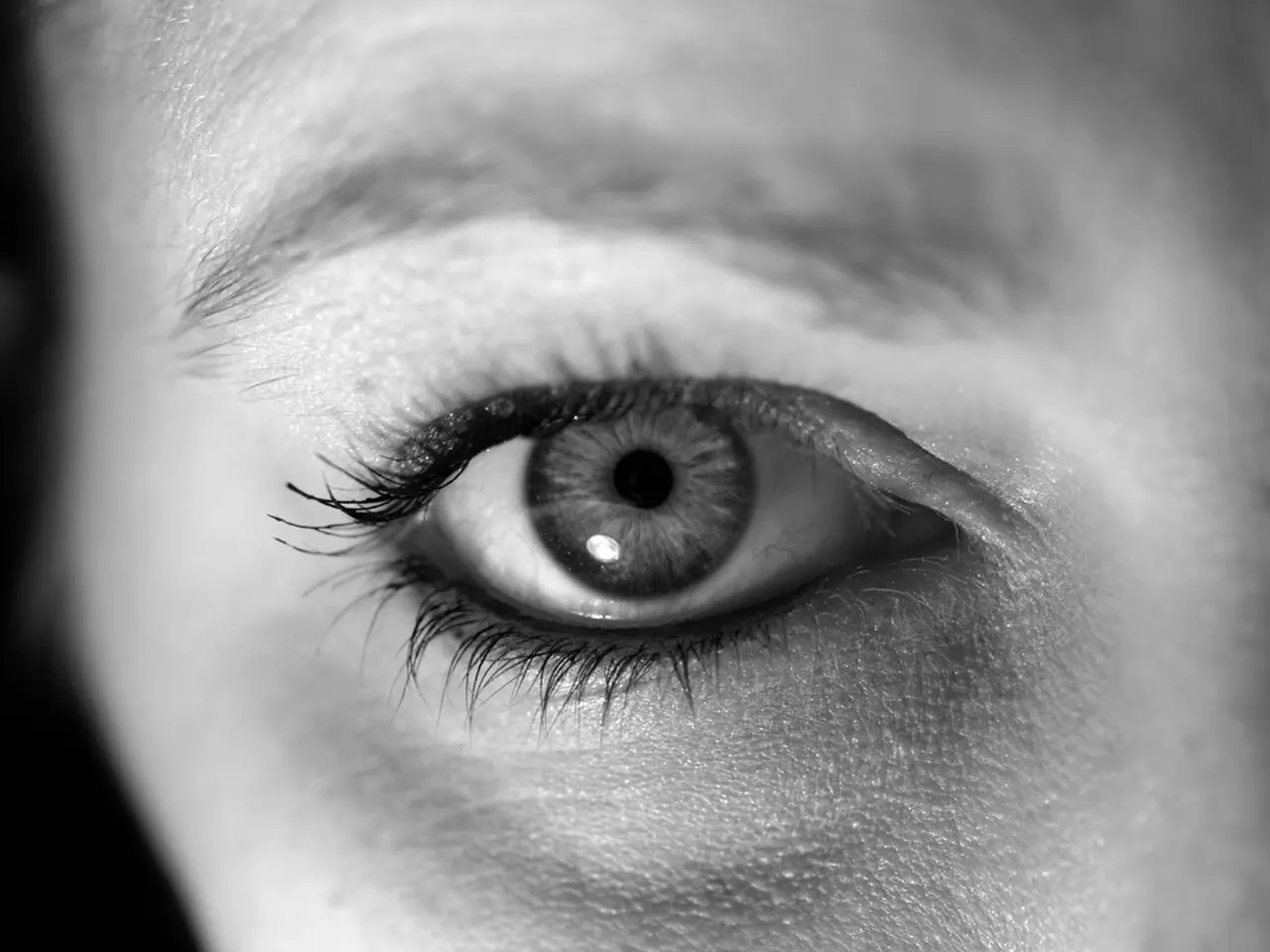Challenges in Maintaining Eye Contact: An Examination of its Complexity in Individuals with Autism
In the realm of social interactions, understanding the nuances of autism is crucial. One area that often causes confusion is eye contact, a topic that warrants a closer look.
Firstly, it's essential to dispel a common misconception: a lack of eye contact from an autistic person is not necessarily a sign of disrespect or disinterest. For some autistic individuals, looking at someone's eyes can trigger feelings of being invaded or violated.
Autism is associated with differences in eye contact, including decreased fixation on others' eyes, differences in eye contact patterns, and looking at less socially relevant stimuli. Hyperarousal may cause autistic individuals to actively avoid eye contact to avoid negative emotional arousal.
These differences can lead to misunderstandings and misinterpretations when interacting with neurotypical individuals. Neurotypical people might perceive a lack of eye contact from autistic individuals as a sign of disinterest, shyness, or lack of engagement, which can result in social difficulties and challenges in communication.
Cultural and social norms also play a significant role. In many cultures, maintaining eye contact is seen as a sign of respect, attentiveness, and honesty. When autistic individuals do not adhere to these norms, it can lead to negative perceptions and misunderstandings about their character or intentions.
The lack of eye contact can also affect how effectively autistic individuals communicate their needs and emotions. Neurotypical individuals may struggle to interpret or understand the intentions of autistic individuals, which can result in misunderstandings or miscommunications.
Unfortunately, there is still a stigma associated with autism, and a lack of eye contact can reinforce existing stereotypes. This stigma can lead to social isolation and difficulties in forming meaningful relationships for autistic individuals.
However, recognizing these differences can help foster more inclusive and empathetic interactions. It's important to create an inclusive environment where autistic individuals feel comfortable expressing themselves authentically without the pressure to conform to neurotypical norms.
For neurotypical individuals, developing coping strategies such as focusing your gaze on the space between the eyes to simulate eye contact without the intensity of direct gaze can be helpful. Remember, forcing eye contact can be anxiety-provoking and even painful for many autistic people.
It's also crucial to prioritise the wellbeing of autistic individuals. If eye contact causes significant anxiety or discomfort, it's perfectly acceptable to avoid it or limit it as much as possible. Sensory overload can lead to unpleasant physiological and emotional reactions when making and maintaining eye contact for an extended period.
In conclusion, understanding the complexities of eye contact in autism is essential for fostering more empathetic and inclusive interactions. By recognising and accommodating differences in eye contact patterns, we can help break down misconceptions and reduce stigma associated with autism.
- A better understanding of autism's intricacies is vital for effective communication in social interactions.
- Eye contact is a topic requiring closer examination in the context of autism, a matter that frequently sows confusion.
- The misconception that a lack of eye contact represents disrespect or disinterest in autistic individuals needs to be dispelled.
- Sensory sensitivities can cause autistic individuals to avoid eye contact due to feelings of being invaded or violated.
- Autism is characterized by differences in eye contact, such as decreased fixation and looking at less socially relevant stimuli.
- Hyperarousal might lead to aversion of eye contact in autistic individuals to circumvent negative emotional arousal.
- Misunderstandings can arise from these differences in eye contact during interactions between autistic and neurotypical individuals.
- Neurotypical people may perceive insufficient eye contact from autistic individuals as disinterest, shyness, or disengagement, causing social difficulties and communication challenges.
- Cultural norms play a significant role, as maintaining eye contact is often seen as a sign of respect, attentiveness, and honesty in many cultures.
- When autistic individuals fail to adhere to such norms, they may face negative judgments and misinterpretations about their character or intentions.
- The lack of eye contact can influence the effectiveness of autistic individuals in communicating their needs and emotions.
- Understanding the intentions of autistic individuals can be challenging for neurotypical individuals, leading to misunderstandings or miscommunications.
- Recognizing these differences helps create more inclusive and empathetic interactions, allowing autistic individuals to express themselves genuinely without pressure to conform to neurotypical norms.
- Supporting the overall wellbeing of autistic individuals is important, as managing eye contact should prioritize their comfort, and avoiding it or limiting it is acceptable when it results in reduced anxiety or discomfort.




